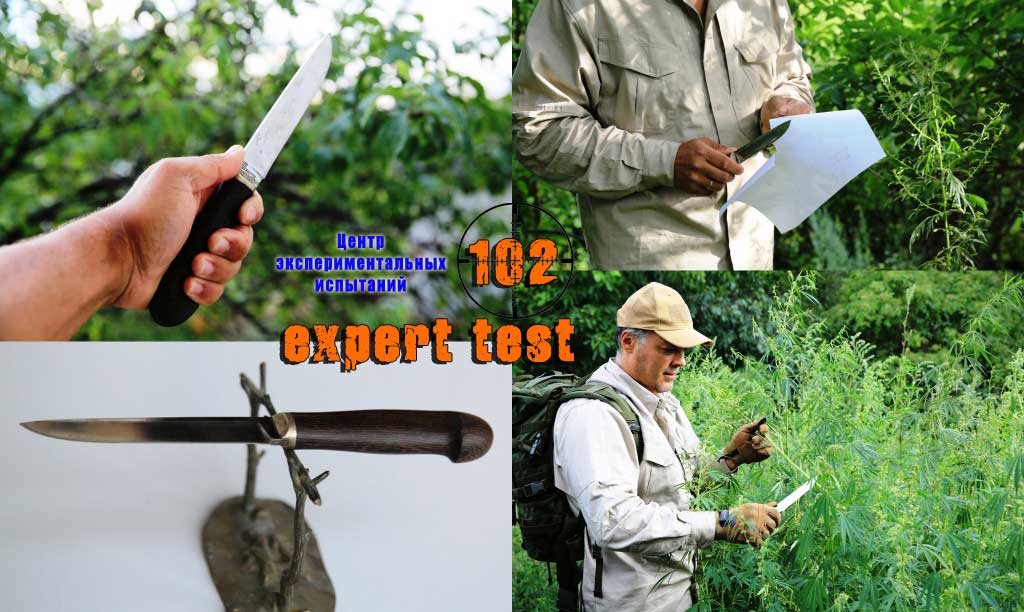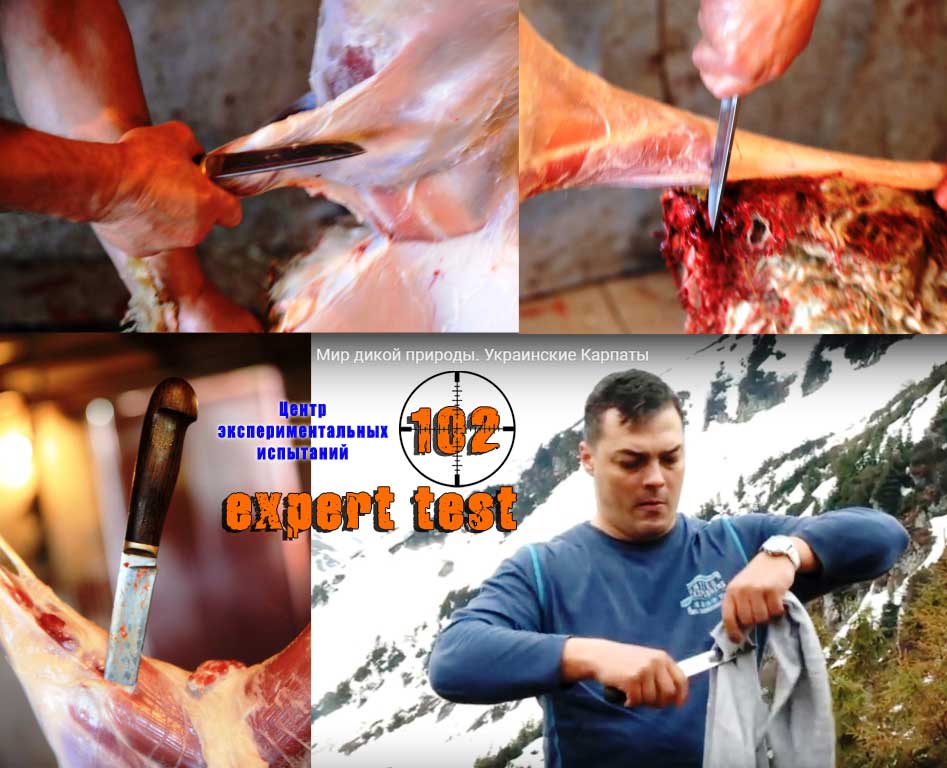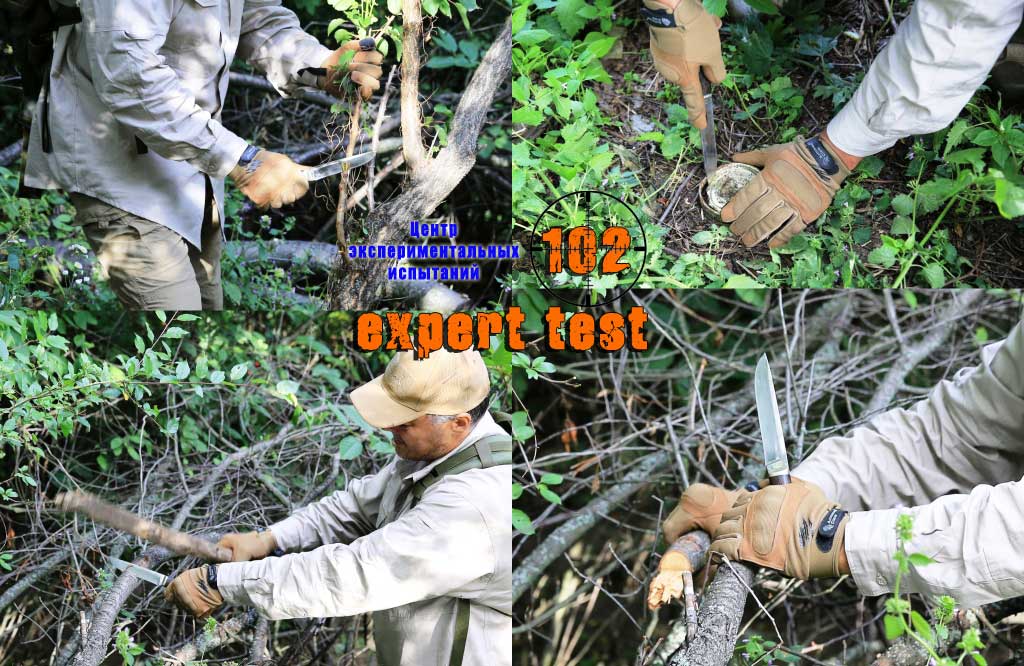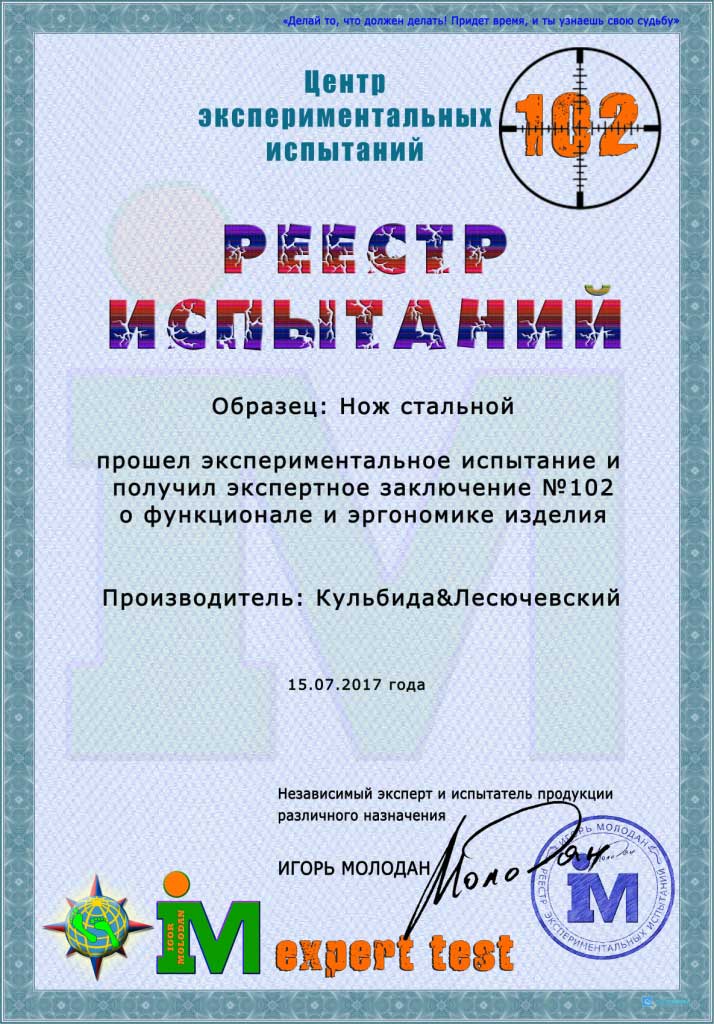- +38 066 411-51-45
Inspection of a steel finishing knife Х12МФ
From the masters of knife making Kulbida Lesyuchevsky received a steel knife for testing, which has no special name and is positioned as a cutting blade for everyday use.
The knife is made of H12MF steel. H12MF steel is very dense in structure and resistant to shock, it is used in the manufacture of various dies. Now this steel is most often used in the manufacture of hunting knives, as its properties allow you to use a knife, for example, for processing carcasses and not be afraid of rapid blunting. Disadvantages include corrosion and fragility.

The knife has the shape of a classic fink with a straight butt and a flat-concave wedge with a feeder and a straight cutting edge along the entire length of the blade. At the junction of the blade with the handle is a copper sleeve, which smoothly passes into the wooden part of the knife. This transition is the center of mass, which is inherent in universal cutting knives - the position of the center of mass only at the level of the index finger with a straight grip. You do not need to make an effort to hold the knife in your hand, than it is easy to control and well controlled. The polished blade has the manufacturer's mark and steel grade at the base.
The knife is not all-metal, which indicates that the sword is mounted on the shank of the handle. The monolithic handle has an ergonomic shape with rounding at the end and is made of drilling wood. Bubinga is a very heavy, strong tree. It has a pleasant reddish-brown color, sometimes has a texture reminiscent of a bee's wing, which gives a slight three-dimensionality.
Knife length 260 mm, blade length 135 cm, blade width 25 mm, butt thickness 4 mm. Knife weight: 145 g.
Test
For several years it has been tested in various natural conditions during expeditions and autonomies. This model was used in one of the series of the author's video project "World of Wildlife", dedicated to the Carpathians.
The convex shape of the handle, thanks to the ergonomic shape and thickening at the end of the knife, fits perfectly in the hand and is comfortable to work with and without gloves. This is the shape of time-tested Finnish-style knives. It's nice to keep such a knife, and with different grips, how to work with them. The balance is located in the area of the index finger, which allows you to work confidently for a long time without undue effort.

Author's sharpening allows you to easily cut paper and other materials, shave hair, treat animals, and sharpening lasts a long time. This is especially true when processing animal carcasses. In my case, the knife was processed without bringing about 40 carcasses.

The knife copes well with chopping operations. Thanks to the not small blade, it is not a problem for him to cut down a small branch in one fell swoop or, with a few blows to the butt with a stick, a large branch or tree trunk up to 5 cm in diameter.
The prickly characteristics of the knife are not the highest, but it is more designed for processing and cutting operations than for throwing and penetrating wounds. Although the handle material is one of the strongest natural materials in the plant world, I would not recommend throwing it at a target, because such a handle mount may not withstand strong shocks, and there is nothing to do. There are special knives for throwing.

Due to its thickness, the blade is quite strong, so it can easily overcome any type of cutting, opening cans or punching metal.
Steel is quite fragile, so I would not recommend digging out the tip of the blade wood or unscrewing screws. In my case, after such careless work, the tip just broke off by three millimeters, after which it had to be rounded on the machine. This is not critical, but, you will agree, unpleasant. Despite this, the knife can easily withstand a transverse load of 1 quintal of weight. Slightly bends, but holds, and after removing the load returns to its former shape.
Similarly, this brand is prone to corrosion. After a day's crossing in the snow-covered Carpathians, the next day the places that interacted with the snow in the leather sheaths were covered with shells that had to be polished at home.

The blade of the knife really keeps sharpening for a long time, but if it becomes blunt, it will be problematic to restore the cutting properties in the field without special bars. This knife requires very careful and proper care, both for the blade and for the sword as a whole. Therefore, I recommend timely straightening the blade, cleaning and wiping the sword, as well as properly store it and carry it dry.

Conclusion. This model of knife perfectly copes with cutting operations, keeps sharpening for a long time, but needs careful care and professional sharpening.
Source: http://avtonom.club/test-tsentr.html/nozh-stalnoj-razdelochnyj/

